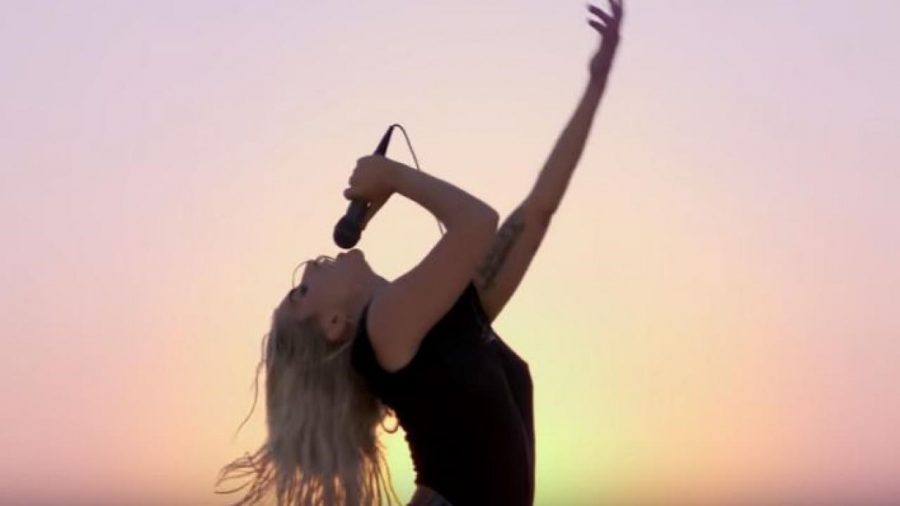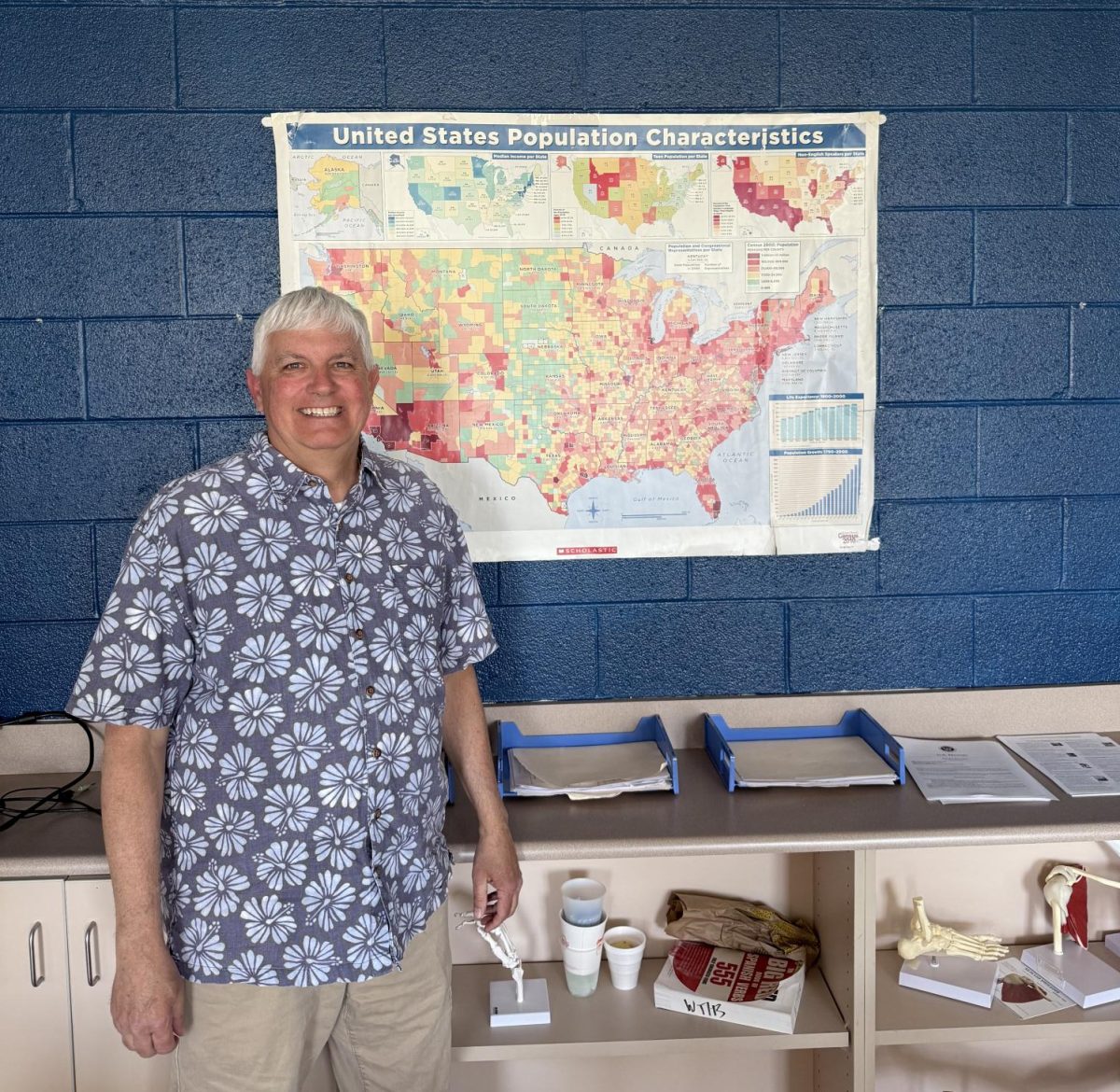Five Foot Two: A Look Into the Eccentric Life of Gaga
A behind the scenes look at Gaga’s “Perfect Illusion” music video from Five Foot Two, filmed at the desert surrounding Los Angeles, California
December 12, 2017
Celebrities throughout the ages have assumed a stage persona, an alter ego of their true selves to present to the public. This walking stereotype doesn’t do them justice, doesn’t show the complexity of their personality. Recently, my eyes have been opened to this dilemma as it applies to Lady Gaga, through a documentary called Five Foot Two– available on Netflix, directed and filmed by Chris Moukarbel, produced by Lady Gaga and Heather Parry. In this raw, insightful exposé of Gaga, we discover the many layers beneath the glamour girl, the extravagant and wacky pop star. Who knew that beneath the meat dress lies a sentimental, passionate, determined, and melancholy woman, alone in her singular stardom.
A soft side of Gaga is hinted at in the name of her newest album: Joanne. The name was that of her late aunt, an artist diagnosed with Lupis at the young age of 19. Amputation of her hands was suggested; the alternative was death. Joanne’s mother, Gaga’s grandmother, felt that Joanne would live an unfulfilled life without the tools of her art. Thus, it was decided to let Joanne pass, rather than having her face a life of pain, tormented by what once was. Gaga claims “I am Joanne.” At surface value, Gaga is imparting that she was named after Joanne, that her name carries familial significance. However, a deeper undertone lies within this poignant connection. She too exudes intense passion for her craft. Gaga parallels Joanne in that she would die for her passion if she had to. I personally interpreted this as Gaga’s pledge of allegiance to music, a declaration of devotion to the death.
Additionally, Gaga’s recounting of Joanne’s story reveals her deep family ties. She notes, “My family is the most important thing in my life.” This powerful sentiment is also evident in a heartfelt scene between Gaga and her relatives as she plays the title track, particularly for her grandmother. A captivating moment- her father leaves to hide his tears and her grandmother remains silent, enraptured by the music, speaking intimate words of love and wisdom to her granddaughter. Before leaving, Gaga shares a long embrace with her grandmother in bittersweet understanding. Moreover, Gaga’s familial fidelity shows itself in various forms, including calls to sick family member Sonja Durham with concern and support, and a myriad of scenes that display Gaga simply cooking, laughing, being with loved ones, wherever and whenever she can.
To miss the emphasis on family is to miss the fabric of Gaga’s complex heart.
Conversely, there is a dark side illuminated by the subtleties of the cinematography. The film maintains a subtle melancholy undertone, showing Gaga at her highest of highs and lowest of lows, with a smattering of tense moments, reminding us of the never-ending pressure placed on Gaga- the woman who must always be on- for fans, for paparazzi, for her job. Her life is a job. We are reminded of the magnitude of her status when singer Florence Welch comments during a collaboration, “I still don’t understand how you manage to press post when you have like 18 million [followers]… I wouldn’t be able to post anything.” In addition to her immense following, she is forced to contend with the constant presence of the press. Many scenes are shot pre-paparazzi, of Gaga and her hair/makeup team planning out an elaborate look, complete with every cosmetic detail imaginable, for a simple walk from building to the car. She must always be on.
The constant demand of fame has taken a toll on her in more ways than one.
Contributing to the melancholy tinge in Gaga’s life is the harsh reality of the music business, with its brutal force against women, oppressing and exploiting female stars in unfathomable ways. Gaga imparts this to us in a recollection of her past while sitting on a curb amidst the bustling night. It is in this moment that she reveals the sexism of the music industry, how producers have manipulated her and many other women into deranged dependence, making them believe they must conform to a mold of gaudy, overly sexualized cliché. Gaga explains that this is the cause of the sensationalist tendencies in the earlier stages of her career- “I always… put some absurd spin on it that made me feel like I was still in control.” She retained her unique identity and refused their attempt to transform her. Her current state is much better- she has found true partnership in Mark Ronson, her latest producer and newfound friend, who treats her as an equal and works with her artistic vision instead of against it.
Gaga’s creative integrity has also evolved via her new look- a more natural style- less makeup, fewer wigs, fewer costumes and more of her true self. “We’ve just seen me… glamorous for almost ten years… it’s boring”, Gaga remarks. We’ve come to expect the unexpected from Gaga- she still does not disappoint in this regard, she just does so now showing us a real person instead of the extravagant facades of her past. We see this change in her music as well- in Joanne, we hear edgy, profound, and authentic poems of Gaga- a sharp contrast to the over-synthesized bandwagon pop she presented in the earlier portion of her career. Our Gaga finally reveals her true, vibrant colors.
While her transparency improves, her body and mind become crippled by the intensity of her fast-and-furious life. Throughout the documentary, we often bear witness to therapeutic massages necessitated by Gaga’s chronic full body pain. Upon first viewing, I found her reaction to the ailments to be overly dramatic— then again, maybe this is only in proportional to her extreme lifestyle. My own reaction reflects the views of the whole, a public quick to judge- a stressor of Gaga’s, which perpetuates a vicious circle. Her mental and emotional health has also taken quite a hit; Gaga openly admits to her depression and drug abuse in response. In addition, alcoholism has plagued her existence in a helpless attempt to escape the fame. Amidst the over-exhaustion, however, there is some positive to be derived- the motive- Gaga’s devotion and compassion for her fans. During one notable doctor visit, Gaga describes her many, very intense health issues, but despite all this, she claims, “when I feel the adrenaline in my music and my fans, like I can … go.” This intense, other-worldly drive is a defining factor of Gaga.
In true Gaga style, atop the roof of some urban building, amidst the burning bulbs of signs, in the dark of the evening, Gaga opens her mouth, unleashing a chemical chaos and beauty that pervades into the hearts of her many fans embracing her from below. The band finishes off the show, and she looks down to a cacophony of love- she soaks it all in and lets it all out- the tears build in her eyes and the genuine appreciation is clear. Her connection to her fans is one constant in her always evolving, always turbulent life.
But alas, regardless of the reaction of her fans, Gaga knows the value of her craft- she embodies it and it embodies her. In a quiet moment, she remarks, in regards to music, “of all the things I deserve, that is where I know I’m worth something.” This iconic woman serves as a reminder to reserve judgment; the ever-changing, artificial identity of her earlier years fooled us into missing the truth of Gaga, a representative of the many women used to men’s advantage, in the music industry and in life. She stands up for herself and she loves deeply, fiercely. She demands, and demands more. Gaga is worth the hour and forty minutes it takes to enlighten ourselves on her depth, confirm her unique eccentricity, and obtain perspective that you won’t get anywhere else.









